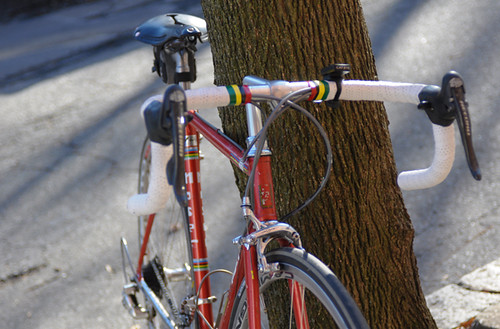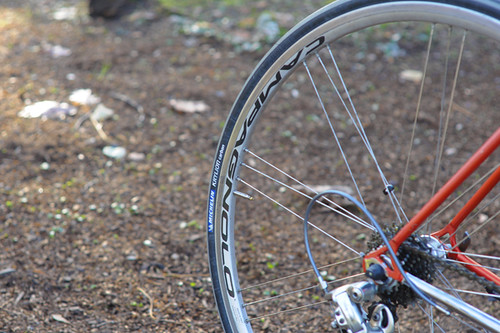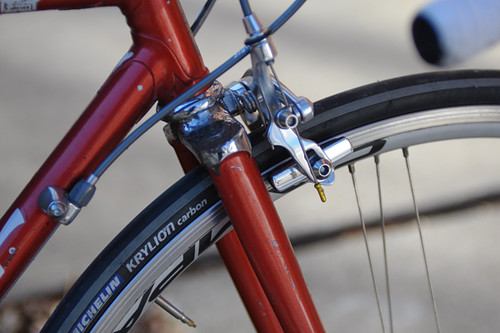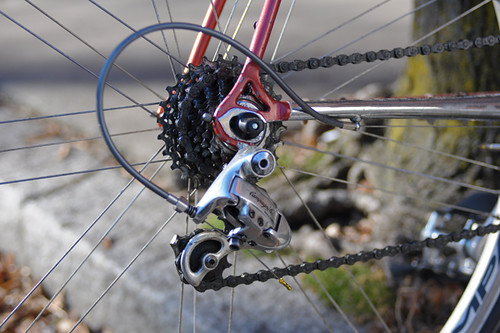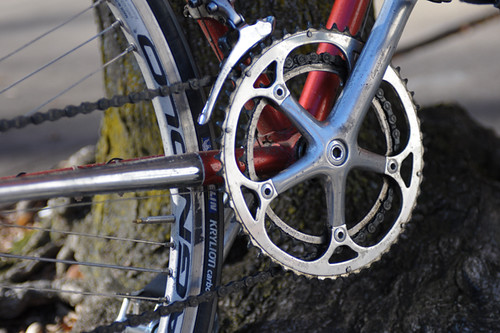 Fall is officially here and winter is not far on its tail. Mother nature has already brought rain, snow and high winds to the Mountain -Paradise received about 4 inches of snow over the past 24 hours and we're expecting both significant rain and snow over the next few days. The National Weather System has put out a winter weather advisory for the next few days; we're expecting 6" - 10" of snow from this evening through Wednesday and then the freezing level is rising to between 8000' - 9000' and we could receive potentially 6" - 14" of rain. Sound eeriely familiar...? Check out some of the photos from blogs on the flood of 2006 to refresh your memory. Let's hope no such catastraphe befalls us this year.
Fall is officially here and winter is not far on its tail. Mother nature has already brought rain, snow and high winds to the Mountain -Paradise received about 4 inches of snow over the past 24 hours and we're expecting both significant rain and snow over the next few days. The National Weather System has put out a winter weather advisory for the next few days; we're expecting 6" - 10" of snow from this evening through Wednesday and then the freezing level is rising to between 8000' - 9000' and we could receive potentially 6" - 14" of rain. Sound eeriely familiar...? Check out some of the photos from blogs on the flood of 2006 to refresh your memory. Let's hope no such catastraphe befalls us this year. Currently, the road to Paradise closes at Longmire only when the freezing level drops to below 4000 ft and precipitation is expected. The gate at Longmire will begin closing nightly at 5:00 pm once the weather turns toward consistent freezing and snow (usually around Thanksgiving or shortly thereafter). The road re-opens in the morning only after our road crew has come through and cleared the road of snow and then deemed it safe enough to drive. There is a sign on the gate, which states the estimated time of opening that day. During the winter, traction tires are needed for travel in the Park at all times and drivers should always carry tire chains in case of road restrictions during inclement weather. For weather forecasts and/or road updates call the Park's information line at (360) 569-2211 and select #1.
Climbing registration processes also change in the winter. While you wait for the gate to open to Paradise, climbers can register and get updated weather and avalanche forecasts at the Longmire Museum - open daily from 9 am until 4 pm. On weekends and holidays, climbers can go to the JVC II, which is open from 10 am until 5 pm. Self-registration is also available up at Paradise (NOT Longmire), located outside on the porch of the old ranger station. However, it is still preferable that climbers register in person to ensure the park has all necessary information about a climbing party and their itinerary, which allows park staff to respond more effectively in the case of an emergency.
Overnight parking this winter up at Paradise is not yet solidified, but most likely there will two locations - one in the upper lot across from the Paradise Inn by the old station and the second overflow lot will likely be in the lower part of the lower parking lot, facing the center island snowbank (same location as last winter). Check back to the Overnight Parking blog in the Access and Roads section for winter parking updates; and if you still have questions, feel free to ask a friendly ranger at the Entrance Station or Longmire Museum for details on where to park at the time of your visit.
Rangers staffing the Museum at Longmire and the JVC are helpful, informative and eager to assist with your needs, but they may not be a climber. Unfortunately, climbing rangers are not on staff regularly this time of year either, so before you come to the park, be sure to check this blog for updated climbing information and route conditions.
 For questions and/or issues regarding this blog or related to climbing at Mount Rainier, call the Climbing Program at (360) 569-6009 or contact Mike Gauthier at the email provided at the bottom of this page. Any general inquiries or questions specifically related to park policy or procedures can be directed to the Longmire Museum at (360) 569-2211, extension 3314 or by email at MORAinfo@nps.gov.
For questions and/or issues regarding this blog or related to climbing at Mount Rainier, call the Climbing Program at (360) 569-6009 or contact Mike Gauthier at the email provided at the bottom of this page. Any general inquiries or questions specifically related to park policy or procedures can be directed to the Longmire Museum at (360) 569-2211, extension 3314 or by email at MORAinfo@nps.gov. Enjoy the Fall while it lasts and since sunset is now MUCH sooner, be sure to start those hikes and climbs earlier to take advantage our limited daylight. See you on the Mountain!

 Time to brush the horses. First I did the bay mare, Nita, then on to the old paint, Sunny. But Nita really likes to be brushed and tells me she wants more by shoving her nose in against Sunny. But Sunny is the worst of my Hairy Beasties so he gets the most. The hair comes off in swirls that almost look like big hairy worms. then it is all in a pile at his feet. Hate to say it but I know I will have to do it all over in a day or so.
Time to brush the horses. First I did the bay mare, Nita, then on to the old paint, Sunny. But Nita really likes to be brushed and tells me she wants more by shoving her nose in against Sunny. But Sunny is the worst of my Hairy Beasties so he gets the most. The hair comes off in swirls that almost look like big hairy worms. then it is all in a pile at his feet. Hate to say it but I know I will have to do it all over in a day or so. 


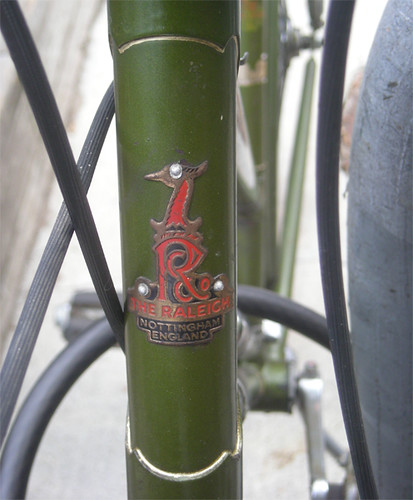 You may have noticed that on some bicycles, the edges of the lugs are attractively outlined in gold or in a contrasting colour. This treatment is called "pinstriping" and is done by hand after the bicycle's frame is painted. I like the look very much and decided to try it on my Raleigh Lady's Sport, in preparation for a more serious project. I was nervous, but it turned out to be easier than I expected. If you want to give it a try yourself, here is how:
You may have noticed that on some bicycles, the edges of the lugs are attractively outlined in gold or in a contrasting colour. This treatment is called "pinstriping" and is done by hand after the bicycle's frame is painted. I like the look very much and decided to try it on my Raleigh Lady's Sport, in preparation for a more serious project. I was nervous, but it turned out to be easier than I expected. If you want to give it a try yourself, here is how: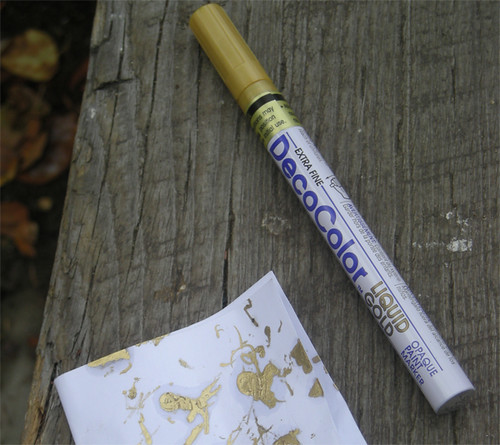 To go the truly professional route, you will need enamel paint and a pinstriping brush in the smallest size available. Having said that, I do not think these tools are necessary unless you are an experienced professional and are pinstriping a $3,000 frame with super-intricate lugwork. The enamel method can be difficult and messy, plus enamel paint contains led. Instead, I recommend a paint pen. Even professionals use these for simple projects. Several manufacturers make quality paint pens that are suitable for pinstriping bicycle frames, including
To go the truly professional route, you will need enamel paint and a pinstriping brush in the smallest size available. Having said that, I do not think these tools are necessary unless you are an experienced professional and are pinstriping a $3,000 frame with super-intricate lugwork. The enamel method can be difficult and messy, plus enamel paint contains led. Instead, I recommend a paint pen. Even professionals use these for simple projects. Several manufacturers make quality paint pens that are suitable for pinstriping bicycle frames, including  The paint pen needs to be started by pressing down on the nib and pumping it several times - something best done on a piece of paper. When the paint flows through the pen slowly and evenly, you can begin.
The paint pen needs to be started by pressing down on the nib and pumping it several times - something best done on a piece of paper. When the paint flows through the pen slowly and evenly, you can begin. Before starting the process, it is a good idea to clean the edges around the lugs and wipe them dry. Otherwise, your paint pen may get clogged with dust and grime. Once the area is prepared, simply begin to trace around the lugs with the paint pen, at a slow and even pace.
Before starting the process, it is a good idea to clean the edges around the lugs and wipe them dry. Otherwise, your paint pen may get clogged with dust and grime. Once the area is prepared, simply begin to trace around the lugs with the paint pen, at a slow and even pace. If the pen skips over a spot, go back and carefully re-trace that spot. If your hand shakes and you make an uneven line, or if the paint smears, wipe it off quickly with your fingertip or fingernail before it dries.
If the pen skips over a spot, go back and carefully re-trace that spot. If your hand shakes and you make an uneven line, or if the paint smears, wipe it off quickly with your fingertip or fingernail before it dries. Once the paint dries, the marks you have made will be water resistant. If you notice a mistake after that happens, you can still get rid of it by carefully scraping the paint marks off with an exacto knife or a razor blade.
Once the paint dries, the marks you have made will be water resistant. If you notice a mistake after that happens, you can still get rid of it by carefully scraping the paint marks off with an exacto knife or a razor blade.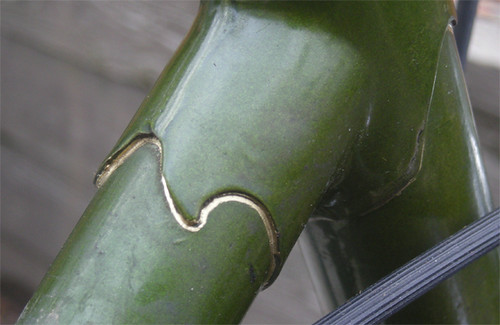 One issue you might encounter with rougher lugwork, is jagged edges. The lugs on my Raleigh Lady's Sports are quite crudely finished, and as you can see above, it can be difficult to make smooth outlines when the edge itself is crooked. But don't worry about that too much; these little details aren't noticeable unless you really examine the lugs up close. And I can assure you that the pinstriping on standard production vintage bikes is just as messy: Whoever outlined the lugs on my Motobecane at the factory did a sloppier job than my DIY.
One issue you might encounter with rougher lugwork, is jagged edges. The lugs on my Raleigh Lady's Sports are quite crudely finished, and as you can see above, it can be difficult to make smooth outlines when the edge itself is crooked. But don't worry about that too much; these little details aren't noticeable unless you really examine the lugs up close. And I can assure you that the pinstriping on standard production vintage bikes is just as messy: Whoever outlined the lugs on my Motobecane at the factory did a sloppier job than my DIY.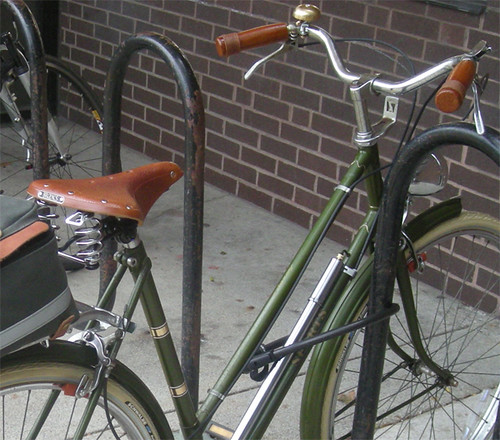 So really, don't be afraid to go for it. If you have an old bicycle you'd like to spruce up, pick up a paint pen and give it some nice lug accents.
So really, don't be afraid to go for it. If you have an old bicycle you'd like to spruce up, pick up a paint pen and give it some nice lug accents.

 The Brubaker plot at South Park Cemetery, south of Columbia City on State Road 205, in Whitley County, Indiana. Photos taken in October ... Top photo, taken 10/24, is looking east and the second one, taken 10/09, is looking to the west.
The Brubaker plot at South Park Cemetery, south of Columbia City on State Road 205, in Whitley County, Indiana. Photos taken in October ... Top photo, taken 10/24, is looking east and the second one, taken 10/09, is looking to the west.



 Becky – Babs – MayThank You, ladies, for making last week bearable – and even fun, at times.
Becky – Babs – MayThank You, ladies, for making last week bearable – and even fun, at times.

 Hopefully these daylight pictures of Jacqueline will do her more justice than the blurry ones from the previous night. These were taken yesterday in my courtyard. I rode her around Vienna all day in a state of disbelief. She rides wonderfully and the folding basket-panniers are amazingly functional. It does not matter what I am wearing, what I am carrying, and where I need to go - this bicycle is ready for anything.
Hopefully these daylight pictures of Jacqueline will do her more justice than the blurry ones from the previous night. These were taken yesterday in my courtyard. I rode her around Vienna all day in a state of disbelief. She rides wonderfully and the folding basket-panniers are amazingly functional. It does not matter what I am wearing, what I am carrying, and where I need to go - this bicycle is ready for anything. As mentioned previously, Jacqueline is a lady's Steyr W
As mentioned previously, Jacqueline is a lady's Steyr W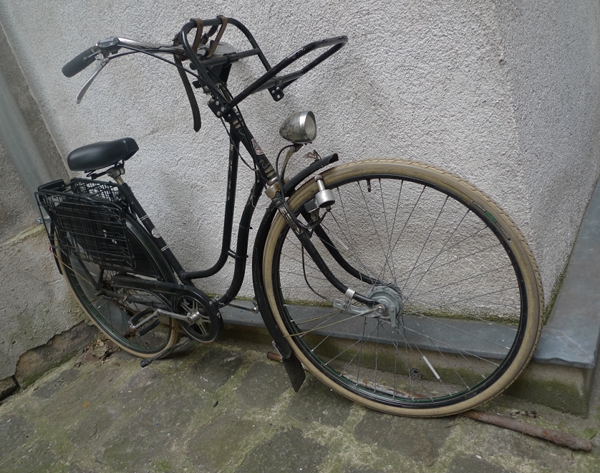 Jacqueline is a 1980s model, though its components are from a variety of time periods. The frame design is a "swan frame": The downtube curves around the front wheel and the top tube forms a complimentary curve. Put together, they form a "swan's neck" shape.
Jacqueline is a 1980s model, though its components are from a variety of time periods. The frame design is a "swan frame": The downtube curves around the front wheel and the top tube forms a complimentary curve. Put together, they form a "swan's neck" shape.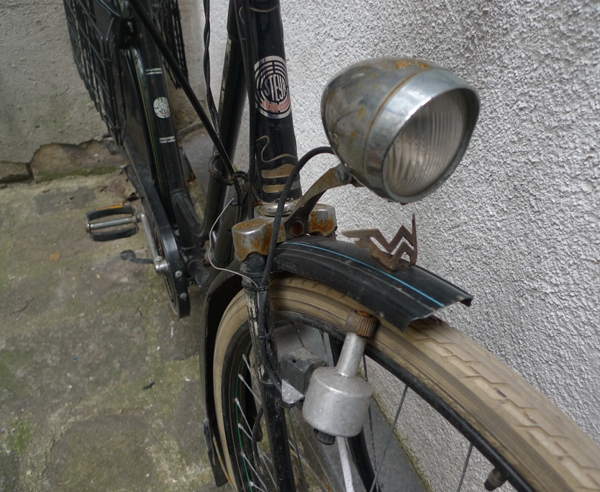 To my eye, the lugwork on the headtube resembles swan as well, though I may be imagining things.
To my eye, the lugwork on the headtube resembles swan as well, though I may be imagining things. Lugged connector between the downtube and the toptube.
Lugged connector between the downtube and the toptube.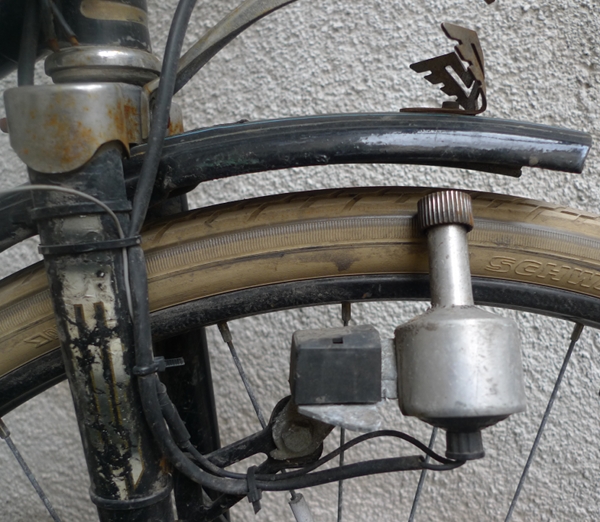 Is the bicycle equivalent of "hood ornament" a "fender ornament"? This bike has one in the shape of a wing-like art deco "W" - appropriated from a German Wanderer bicycle.
Is the bicycle equivalent of "hood ornament" a "fender ornament"? This bike has one in the shape of a wing-like art deco "W" - appropriated from a German Wanderer bicycle. The beautiful tear-drop tail light. I very much want one of these for one of my bikes. You can see the little wire coming out from under the fender and running along the rusty stay, zip tied to it. The winged "W" logo is once again from a Wanderer, though the fender itself is native. Notice the holes that have been drilled into the fender for the original dressguards. You can also see the double kickstand (I prefer this one to the Pletscher) and the rear coaster brake hub. It is not a Sturmey Archer; in fact I saw no markings on it at all.
The beautiful tear-drop tail light. I very much want one of these for one of my bikes. You can see the little wire coming out from under the fender and running along the rusty stay, zip tied to it. The winged "W" logo is once again from a Wanderer, though the fender itself is native. Notice the holes that have been drilled into the fender for the original dressguards. You can also see the double kickstand (I prefer this one to the Pletscher) and the rear coaster brake hub. It is not a Sturmey Archer; in fact I saw no markings on it at all. The coaster brake functions extremely well, but the front (hub) brake is mostly decorative - It works when you're stopped at an intersection and want to prevent the bicycle from rolling forward, but doesn't really make an impact when the bicycle is in motion. The coaster brake is plenty though, and I quickly got into the habit of simply ignoring the front brake lever. The hub gears are operated via the "Torpedo" shifter. The gears are widely spaced, similar to the
The coaster brake functions extremely well, but the front (hub) brake is mostly decorative - It works when you're stopped at an intersection and want to prevent the bicycle from rolling forward, but doesn't really make an impact when the bicycle is in motion. The coaster brake is plenty though, and I quickly got into the habit of simply ignoring the front brake lever. The hub gears are operated via the "Torpedo" shifter. The gears are widely spaced, similar to the 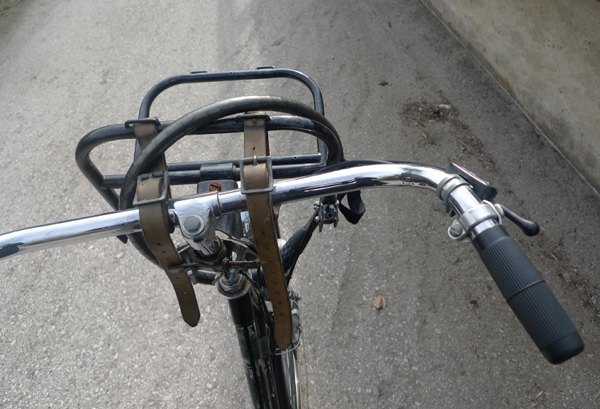 The handlebars are what people today usually refer to as "Porteur" style, but actually they are similar to the version of North Roads that are put on
The handlebars are what people today usually refer to as "Porteur" style, but actually they are similar to the version of North Roads that are put on  Here is the view from the front, with the rack unfolded. The rack is bolted to the stem and strapped to the handlebars with aged leather belts. It is not supported enough to carry heavy loads, but it is a convenient place for things like extra layers of clothing that might be removed and then put back on during a ride.
Here is the view from the front, with the rack unfolded. The rack is bolted to the stem and strapped to the handlebars with aged leather belts. It is not supported enough to carry heavy loads, but it is a convenient place for things like extra layers of clothing that might be removed and then put back on during a ride.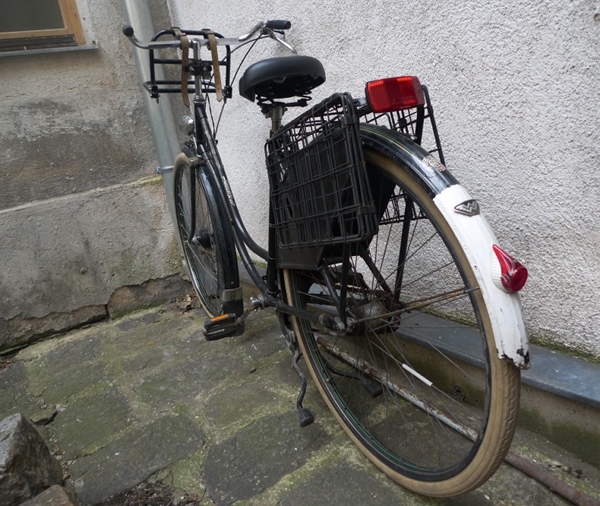 The rear basket panniers, on the other hand, can pretty much take anything you want to put in them. My large work bag fits into these perfectly, as do grocery bags (2 in each). The ride quality is hardly effected when the basket panniers are loaded. I think I need to install these on one of my bikes. The tires are 28" cream Schwalbe Delta Cruisers, just like on my Raleigh at home. They roll fabulously and swallow cobblestones without a peep - wonderful.
The rear basket panniers, on the other hand, can pretty much take anything you want to put in them. My large work bag fits into these perfectly, as do grocery bags (2 in each). The ride quality is hardly effected when the basket panniers are loaded. I think I need to install these on one of my bikes. The tires are 28" cream Schwalbe Delta Cruisers, just like on my Raleigh at home. They roll fabulously and swallow cobblestones without a peep - wonderful. Yellowstone National Park, July 1979
Yellowstone National Park, July 1979 He has been visiting family places and learning the histories there. He has been learning about the Civil War and the history in that area. He has been working hard for a farmer and making lots of money. Most of what he is doing sounds awesome to me.At the heart of it, he is still a city boy though. So he doesn't know that "leaves of three, let it be".
He has been visiting family places and learning the histories there. He has been learning about the Civil War and the history in that area. He has been working hard for a farmer and making lots of money. Most of what he is doing sounds awesome to me.At the heart of it, he is still a city boy though. So he doesn't know that "leaves of three, let it be".
 Poor guy. Even though I'm not good at nurturing sick people, I still wish he were with us so I could baby him while he is feeling so miserable. I am glad that he is with people who do love him and will take care of him.
Poor guy. Even though I'm not good at nurturing sick people, I still wish he were with us so I could baby him while he is feeling so miserable. I am glad that he is with people who do love him and will take care of him.